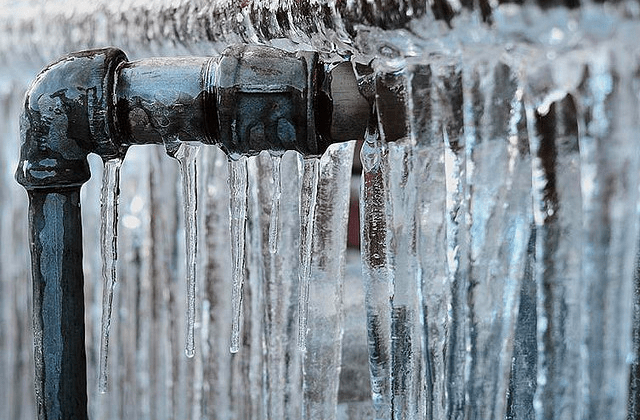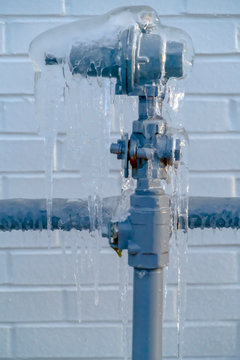Protecting Your Pipes from Cold Weather: Effective Methods
Protecting Your Pipes from Cold Weather: Effective Methods
Blog Article
The content following next pertaining to How To Avoid Freezing Pipes is immensely engaging. You should see for yourself.

Winter can ruin your pipes, especially by freezing pipes. Here's how to stop it from taking place and what to do if it does.
Intro
As temperature levels decrease, the risk of icy pipelines increases, possibly bring about expensive repairs and water damage. Understanding how to prevent icy pipes is essential for house owners in chilly environments.
Recognizing Icy Pipelines
What creates pipelines to freeze?
Pipes ice up when subjected to temperatures below 32 ° F (0 ° C) for extended periods. As water inside the pipelines freezes, it expands, putting pressure on the pipe walls and potentially triggering them to break.
Dangers and problems
Icy pipes can result in water supply disruptions, residential or commercial property damage, and costly fixings. Burst pipes can flood homes and trigger considerable structural damage.
Signs of Frozen Pipeline
Determining frozen pipes early can prevent them from bursting.
How to identify frozen pipes
Search for decreased water flow from faucets, uncommon smells or sounds from pipes, and visible frost on exposed pipelines.
Prevention Tips
Shielding at risk pipelines
Wrap pipes in insulation sleeves or make use of warm tape to safeguard them from freezing temperatures. Concentrate on pipes in unheated or exterior locations of the home.
Home heating methods
Keep indoor spaces properly warmed, particularly locations with plumbing. Open cupboard doors to allow cozy air to distribute around pipelines under sinks.
Safeguarding Exterior Pipes
Yard hoses and outdoor faucets
Separate and drain pipes yard hose pipes before winter months. Set up frost-proof spigots or cover exterior faucets with shielded caps.
What to Do If Your Pipes Freeze
Immediate activities to take
If you think icy pipes, maintain faucets available to ease stress as the ice melts. Utilize a hairdryer or towels taken in hot water to thaw pipelines slowly.
Long-Term Solutions
Architectural changes
Think about rerouting pipelines far from exterior walls or unheated areas. Add extra insulation to attics, cellars, and crawl spaces.
Updating insulation
Purchase high-grade insulation for pipelines, attic rooms, and wall surfaces. Appropriate insulation assists maintain consistent temperatures and reduces the risk of icy pipelines.
Final thought
Stopping frozen pipes calls for aggressive procedures and quick responses. By recognizing the reasons, indications, and preventive measures, home owners can secure their plumbing throughout cold weather.
6 Proven Ways to Prevent Frozen Pipes and Protect Your Home
Disconnect and Drain Garden Hoses
Before winter arrives, start by disconnecting your garden hoses and draining any remaining water. Close the shut-off valves that supply outdoor hose bibs and leave the outdoor faucet open to allow any residual water to drain. For extra protection, consider using faucet covers throughout the colder months. It’s also important to drain water from any sprinkler supply lines following the manufacturer’s directions.
Insulate Exposed Pipes
Insulating your pipes is an effective way to prevent freezing. Pipe insulation is readily available at home improvement stores and is relatively inexpensive. Pay close attention to pipes in unheated areas such as the attic, basement, crawl spaces, or garage. Apply foam insulation generously to create a buffer against the cold. You can also wrap your pipes in heat tape or thermostat-controlled heat cables for added warmth.
Seal Air Leaks
Inspect your home for any cracks or openings that could let in cold air. Seal any holes around the piping in interior or exterior walls, as well as the sill plates where your home rests on its foundation. Additionally, make sure to keep your garage door closed unless you’re entering or exiting. Leaving it open creates a significant air leak that can lead to frozen pipes.
Allow Warm Air Circulation
During cold snaps, it’s essential to allow warm air to circulate evenly throughout your home. Leave interior doors ajar to promote better airflow. Open kitchen and bathroom cabinets to help distribute heat consistently around the rooms. If you have small children or pets, be sure to remove any household chemicals or potentially harmful cleaners from open cabinets for safety.
Let Faucets Drip
A small trickle of water can make a big difference in preventing ice formation inside your pipes. When temperatures drop significantly, start a drip of water from all faucets served by exposed pipes. This continuous flow helps prevent the water from freezing. Additionally, running a few faucets slightly can relieve pressure inside the pipes, reducing the chances of a rupture if the water inside does freeze.
https://choateshvac.com/6-proven-ways-to-prevent-frozen-pipes-and-protect-your-home/

We hope you liked our excerpt about Preventing and dealing with frozen pipes. Thank you so much for taking time to browse our piece of content. Appreciated our entry? Please share it. Let others discover it. Thanks so much for taking the time to read it.
Visit Link Report this page